![]()
![]()
![]()
Use LEFT and RIGHT arrow keys to navigate between flashcards;
Use UP and DOWN arrow keys to flip the card;
H to show hint;
A reads text to speech;
30 Cards in this Set
- Front
- Back

What happens to the pressure of the gas as you decrease the volume of the container by 1/2?
|
You double the pressure on the gas
|
|
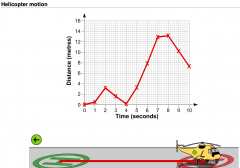
What was the helicopter's average speed between 4-7s?
|
S=D/T. So 13m/3s= 4.34m/s
|
|

What was the average speed between 0-4s?
|
S=D/T. So 20m/4s= 5m/s
|
|
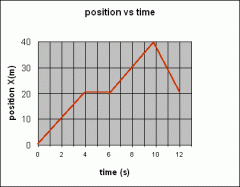
What was the average speed between 10-12s?
|
S=D/T 20m/2s=10m/s
|
|
|
What does inertia experienced depend on?
|
The object's mass
|
|
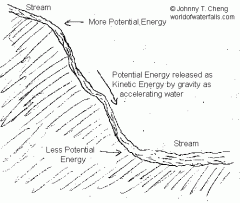
Explain why the water has more potential energy at the top of the hill. What is Potential Energy? What is Kinetic Energy?
|
Potential Energy is Energy an object has because of it's location. Gravity will cause the water's mass to accelerate as it travels down hill, so when it has the greatest distance to fall it has the greatest potential energy.
Kinetic Energy is the energy of movement, it is larges where ever things are moving the fastest. |
|
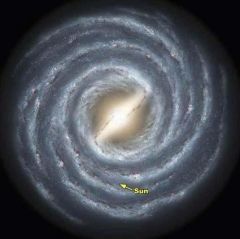
What type of galaxy?
|
Bar Spiral
|
|
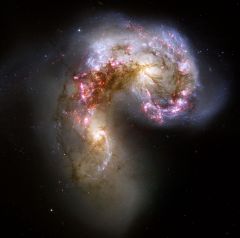
What kind of galaxy?
|
Irregular
|
|
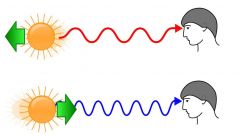
Explain the difference between a red shift and a blue shift.
|
A red shift means that the apparent magnitude of an energy source is changing. The energy source seems to get weaker because the frequency (wave speed) is lower, the wavelengths that we receive are lower/weaker=red.
A blue shift means the energy source is getting closer because the frequency is increasing=decreasing wavelength. |
|
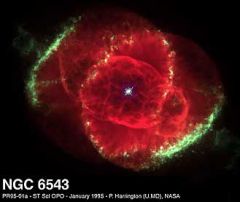
Explain the two forces that must interact to form a stable Nebula.
|
Gravity pulling material in and pressure pushing material out.
|
|
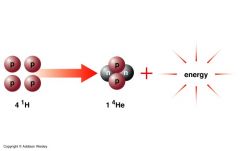
This is the process that creates light in a star, what is it called?
|
Nuclear Fusion
|
|
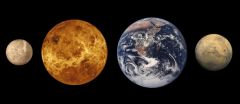
What do you call the planets closest to the Sun? What are they made of? What are their names in order?
|
Terrestrial or Rocky Planets. They have thin atmosphere's and are mostly rock.
Mercury, Venus, Earth, Mars |
|
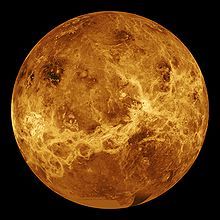
Venus is the planet that is most similar in size to Earth. Why does it look like a fireball to observers?
|
It has a thick atmosphere of Carbon Dioxide gas (CO2). The carbon dioxide gas reflects the sunlight.
|
|

What are the 4 outer planets called? What are they made of? What are their names in order? Which one is biggest? Which one has the rings? Which one is Blue?
|
Gas Giants-made mostly of gas as they are farther from the Sun and cooler.
Jupiter (the biggest) , Saturn (rings), Uranus, and Jupiter (blue) |
|
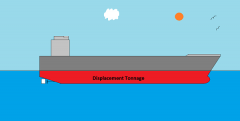
What will happen to the ship if more cargo is added? How much water does the ship displace? Where is the water pressure the greatest?
|
If more cargo is added, the ship will sink into the water more, displacing more water. In order for the ship to float the ship needs to displace an amount of water equal to the weight of the ship. The water pressure is greatest on whichever part of the ship is the farthest underwater as pressure increases with depth.
|
|
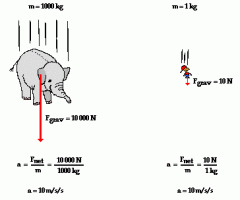
What is acceleration due to gravity equal to? Explain why things fall at the same rate in a vacuum but at different rates in real life.
|
Acceleration due to gravity = -9.8m/s. Things fall at the same rate in a vacuum because there is no air resistance. In real life things fall at different speeds because of air resistance, aka fluid friction.
|
|
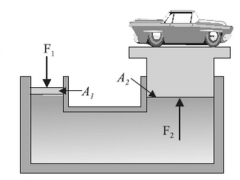
If A1 is 5 cm across and A2 is 25 cm across, how much force will come out of A2 if a force of 7N is applied to A1?
|
35N.
The difference in size from A1 to A2 is 5x's larger. You would multiply the force by 5. |
|
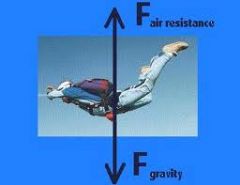
What do you call it when gravity and drag are equal? What will happen to the object?
|
Terminal Velocity, the object will fall at a constant rate of speed.
|
|
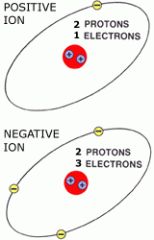
Explain why these are ions and what makes them positive or negative.
|
A positive ion has more protons than electrons. Negative ions have more electrons than protons.
|
|
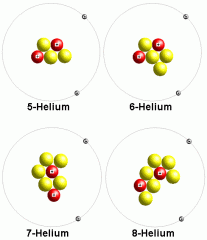
Explain what make these ISOTOPES
|
Each atom has the same number of Protons 2, but different numbers of Neutrons which changes the Atomic Mass.
|
|

What's the difference between mass and weight?
|
Mass is the amount of matter in an object and won't change because of location.
Weight is gravity's pull on an object and weight will changed based on the amount of gravity in a location. |
|
|
Which of the following is a velocity?
3 meters, 3 meters/second, 3 meters/ second North 3 Newtons |
3 meters/second North. Both Speed and direction
|
|
|
How many meters in a Kilometer? How many meters in 4.3km?
|
1000
4.3km=4300m |
|
|
How many mm in a cm? in 5.7cm?
|
10mm=1 cm. 5.7cm=57mm
|
|

What's the name of this tool?
|
Graduated Cylinder
|
|
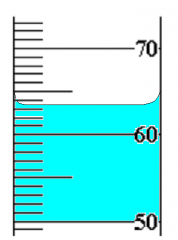
What's the volume shown?
|
63ml you read from the bottom of the meniscus
|
|
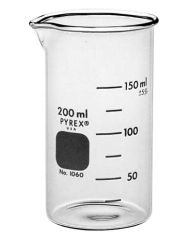
What's the name of this tool?
|
Beaker
|
|
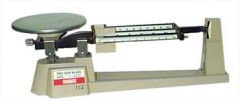
What's the name of this tool?
|
Triple Beam Balance
|
|
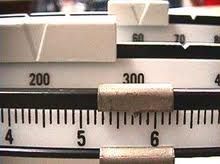
What mass is shown?
|
265.7g
|
|
|
How many grams are in 1.75 kg?
|
1750g
|

